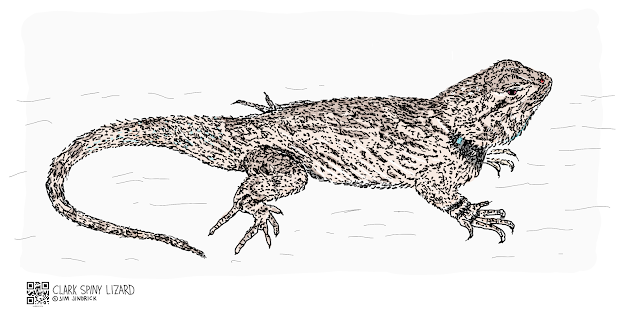- Medium to large lizard, snout-vent lengths reaching 2-1/4 to 5-1/4 inches
- Found in Arizona and New Mexico, as well as south to northern Jalisco, Mexico, including some islands in the Gulf of California
- Known for its arboreal nature, often seen basking on trees and rocks
- Diet primarily consists of insects and other small invertebrates
- Mostly gray-brown or dark gray, with blue tint ... males have blue patches on the throat and belly ... distinctive black and white stripes on the forelimbs
- Prefers wooded areas like oak-pine woodlands, tropical deciduous forests, and riparian areas ... also found in rocky areas at the edges of foothills
- Primarily active during the day, often seen basking on trees or rocks ... when disturbed, it quickly retreats to the opposite side of the tree trunk or into rock crevices
- Found in Arizona and New Mexico, as well as south to northern Jalisco, Mexico, including some islands in the Gulf of California
- Known for its arboreal nature, often seen basking on trees and rocks
- Diet primarily consists of insects and other small invertebrates
- Mostly gray-brown or dark gray, with blue tint ... males have blue patches on the throat and belly ... distinctive black and white stripes on the forelimbs
- Prefers wooded areas like oak-pine woodlands, tropical deciduous forests, and riparian areas ... also found in rocky areas at the edges of foothills
- Primarily active during the day, often seen basking on trees or rocks ... when disturbed, it quickly retreats to the opposite side of the tree trunk or into rock crevices
